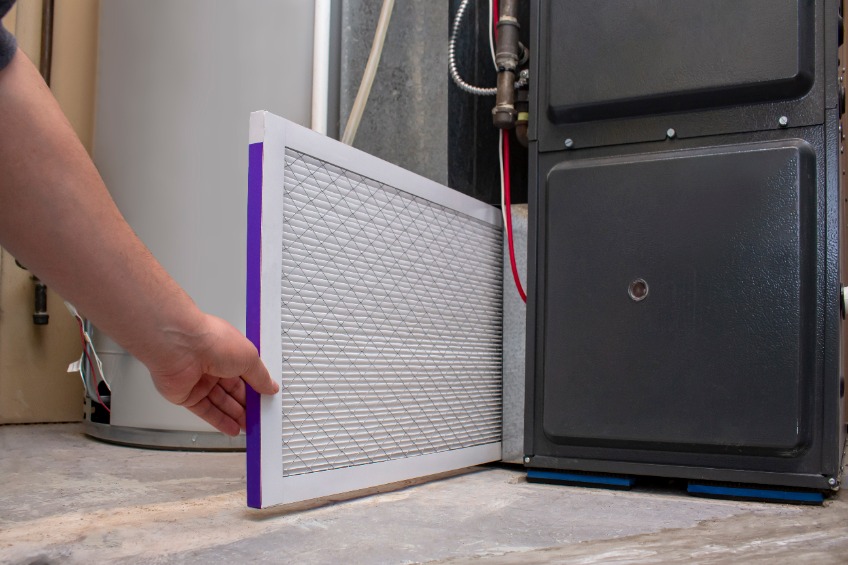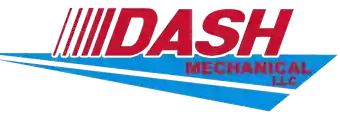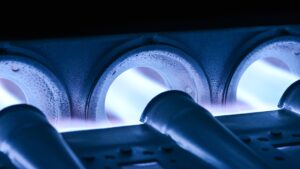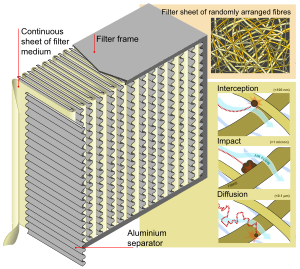If it’s time to replace your furnace you will have several options to choose from. One option is to install a high efficiency furnace. On average, the cost to heat your home accounts for 29% of your energy bill, so using a high efficiency furnace will greatly reduce your energy consumption and reduce your carbon footprint. High efficiency furnaces save money without compromising comfort.
This guide will assist you in making an informed decision about high efficiency furnaces by providing all the information you need.
How Does A High-Efficiency Furnace Work?

One of the keys to the high efficiency furnace is the secondary heat exchanger. Through the use of ductwork, a traditional furnace draws in cold air and blows it passed the singular heat exchanger and distributes the warm air throughout the home. When a traditional furnace is used to heat a home, some of the heat that could be used is vented outside.
High efficiency furnaces add a secondary heat exchanger to capture more energy from the flue gas before it is vented outside. In addition, these furnaces use a sealed combustion chamber and outside air for combustion, which reduces heat loss and drafts. These furnaces also utilize multi-stage burners and variable speed blowers that allow it to run at optimum efficiencies at any thermostat setting.
What is AFUE?
AFUE is an acronym for Annual Fuel Utilization Efficiency. It’s a standard measurement of how efficient a furnace converts energy from the fuel it uses into warm air to heat your home. The higher the AFUE rating, the more efficient your furnace will be and use less energy to heat your home. Furnace efficiency ratings usually fall in the range of 80 to 98%.
How do 80 and 95 AFUE furnaces differ?
When shopping for a furnace you will often see numbers like 80% and 95% efficiency ratings. We discussed the AFUE in the previous section and these numbers refer to it. As a rule of thumb, an 80% furnace uses eight-tenths of every BTU in order to heat your home for every dollar spent on heating cost. This also means that 20% of heat is wasted as it is vented outside.
The US Department of Energy considers a furnace with an AFUE rating between 80 and 83 percent to be a mid-range efficiency furnace with 80 percent being the minimum efficiency level allowed by the US Department of Energy. High efficiency furnaces are typically between 90 and 98 percent AFUE rating and include features like two heat exchangers, variable speed fans, modulating gas valves, sealed combustion chambers, and smart controls.
High-Efficiency furnace benefits
Benefits of high-efficiency furnaces include:
- Your utility bills will be reduced as the furnace uses less energy to heat your home.
- The furnace is environmentally friendly and emits fewer greenhouse gases, which will reduce your carbon footprint.
- The furnace will run longer at lower speeds, which will reduce noise levels while maintaining constant comfort.
- These furnaces often qualify for utility rebates and tax credits.
- When properly maintained these furnaces will last longer than traditional furnaces.
Signs it is time to replace your furnace
- Your old furnace is making unusual noises.
- Your energy bills have increased.
- Your home is not heated evenly.
- You have to make frequent repairs.
- Carbon monoxide alarms are sounding.
- Your furnace is 12 years or older.
- Frequent cycling of your old furnace.
An HVAC professional can walk you through options and help you decide when it is time to replace and upgrade your furnace.




